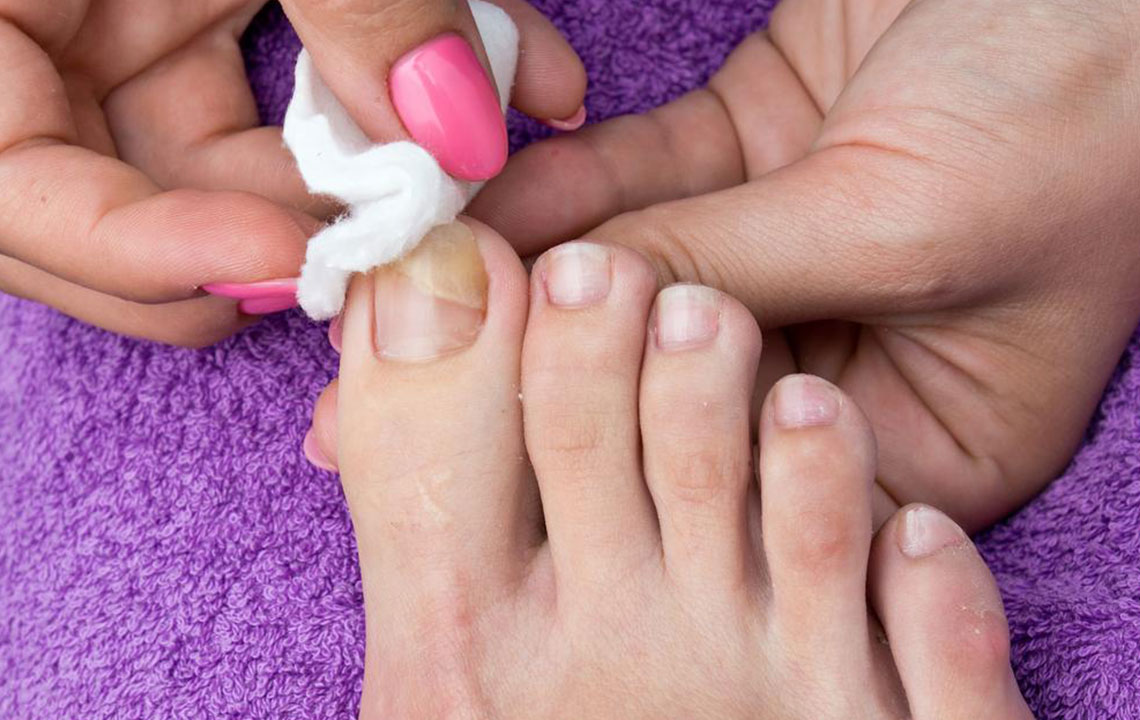Know about Fingernail Fungus and Ways to Treat Fingernail Fungus
Fungal infection of the nail occurs when bacteria or fungi enter the nail bed. The main cause of fingernail fungus is a broken or cracked nail plate or cuticles. It can also result from bacteria inside the body. Often characterized by cracked nail beds, fungal infection makes the nail thick and yellow. There are different fingernail fungus treatment options, but the cure takes time to show results. Before discussing fingernail fungus treatment options, let’s look at the causes and visible symptoms of fungal infection.

Causes of fingernail fungus
Fingernail fungus infection usually occurs due to overgrowth of fungi under, or in the nail. Since fungi need a warm, and moist environment to multiply, so this type of environment helps them thrive easily. Nail infections can be caused by the same fungi that are responsible for causing ringworm, athlete’s foot, or jock itch.
Nail infection can also be caused by fungi present on or in the body. It is also communicable i.e., it can spread if in case you come in contact with someone who already has a fungal infection. As stated by American Academy of Dermatology (AAD), toenails are more prone to fungal infections as compared to fingernails. This is because toes remain covered in the shoes which serves a perfect breeding ground for fungi.
Risk factors for fungal infections
Different causes can be associated with fungal nail infections, with each having its own course of treatment. Remember, although fingernail fungus is preventable, there are certain risk factors that increase the chances of developing it. If you are suffering from any of the below mentioned, likelihood of developing fungal nail infection increases:
- Diabetes
- Poor circulation
- People aging 65 years and above
- Artificial nails and nail injury
- Swim in public swimming pool
- Skin injury near the nail
- Fingers and toes when not dried properly
- Weak immune system
- It has been seen that men are more prone to getting affected by fingernail infection than women. Also, if such infections are persistent in the family, chances of you getting the same automatically increases. People above 65 years of age are at the highest risk for getting affected with fingernail fungal infections. This is because of poor circulation and also because at later stages nail growth is slow and they are thicker than usual.
Symptoms of fingernail fungus infection
A fungal infection has the ability to affect a part of the nail, or several nails together. The signs of fingernail fungus infection include:
- Subungual hyperkeratosis – Scaling that occurs under the nail.
- Lateral onychomycosis- White or yellow streaks on the nail
- Distal onychomycosis- Decomposing or decaying corner or tip of the nail
- Proximal onychomycosis – yellow spots at the bottom of the nail
- Pits in the nail – Flaking white areas on the nail’s surface
- Loss of a nail
Common Signs of fingernail fungus infection
Let’s look at some of the common signs of a fungal nail infection. These are:
- Broken nail that can be easily lift off from the nail bed
- Strong odor from infected nail
- Brittle or thickened nail
- Fingernail Fungus Treatment Options
Generally, doctors don’t recommend over-the-counter products to treat nail infections. Instead, there is some oral antifungal medication that is effective and offers relief from constant itching. One can also use antifungal treatments like antifungal nail lacquer or topical solutions to prevent fungal infections from spreading. These treatments can be easily brushed on the nail in the same way as nail paint. This medication can be used in accordance with the severity and extent of the infection.
Complications of Fungal Nail Infection
- Reappearance of the infection
- Permanent loss of the affected fingernail
- Discoloration or yellowing of the infected nail infection can spread to other body parts and can enter the bloodstream
- Cellulitis, a type of bacterial skin infection can also develop if proper care is not taken.
- Prevention & Fungal Nail Infection Management
Just be incorporating a few changes in daily lifestyle, one can easily prevent a fungal infection from spreading and infecting the nails. Taking good care of nails is very important and the first step here is to keep fingernails clean and well-trimmed to prevent infections. Proper care should also be taken to avoid cutting or injury around the skin of the nails. Also, keep your hands dry as wet hands give fungi a breeding ground to overpopulate and spread.
Fingernail Fungus Treatment
Some other fingernail fungus treatment options that can help in preventing fungal infections of the nails include:
- Use antifungal powders or sprays regularly
- Wash hands with anti-bacterial soap after touching fungal infected nail or toe
- Dry feet properly after showering, ensuring its completely dry between the toes
- Get regular pedicures and manicures from good salons
- Wear cotton socks in order to minimize moisture
- It’s best not to be barefoot in public places
- Avoid or reduce use of nail polish and artificial nails




